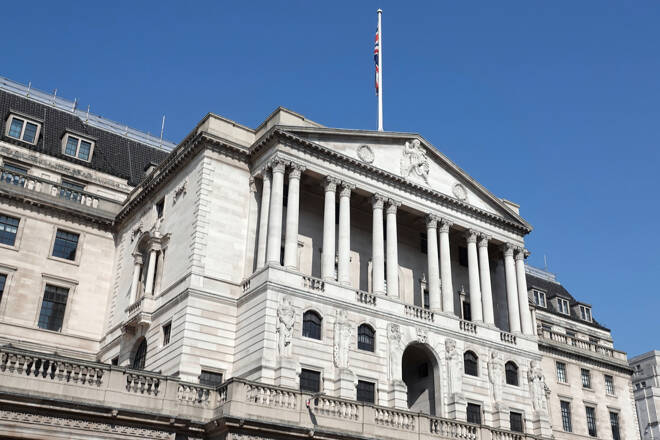Trade Of The Week: Will BoE “Go Hard Or Go Home” On Rates
By:
Take cover! Central banks across the globe have pulled out their big guns and heavy monetary artillery in the face of soaring inflation.
Last week, the Federal Reserve (Fed) raised interest rates by 75 basis points for the second straight month. In July, the Bank of Canada (BoC) hiked rates by a whooping 100 basis points! Even the European Central Bank (ECB) surprised markets with a 50-basis point hike – taking its policy rate out of negative territory in one clean move.
This week, the Bank of England (BoE) is expected to join the heavy hitters – raising rates by 50 basis points after hiking rates by 0.25% five consecutive times since December 2021. If this was a boxing match, the short jabs against inflation have been futile so the central bank is switching to haymakers and uppercuts for the knockout blow! The key question is whether the BoE will embrace the aggression or remain cautious towards rates?
Before we discuss what to expect from the BoE this week, let’s take a quick peek at the GBPUSD.
Things are looking interesting for the currency pair on the weekly charts with prices breaking out from the bearish channel. A weaker dollar remains a key factor behind the pounds recent rebound. If BoE hawks “go hard” on Thursday, this could propel the currency pair higher.
The low down…
Looking beyond the sunny weather and frequent bbq’s, a thunderstorm is brewing.
The outlook for the UK economy remains gloomy due to a combination of negative themes.
Inflation is through the roof with consumer prices hitting 9.4% in June – a fresh 40 year high thanks to soaring food and energy prices. Rising prices are squeezing millions of households, impacting consumption which remains a key engine of economic growth.
The latest PMIs are not looking too pretty with manufacturing slumping to a 25-month low in July. Let’s not forget about political uncertainty and post-Brexit related drama’s adding to the already toxic cocktail. In a nutshell, economic conditions remain unfavourable with fears mounting over the UK falling into a recession.
Back in June, the central bank signalled that it would ‘act forcefully’ if the inflation menace refused to stand down. Traders are currently pricing in a 79% probability of a 50-basis point rate hike this month.
The week ahead…
The main risk event for Sterling will be the Bank of England rate decision on Thursday.
Given how markets expect the bank to move ahead with its biggest rate increase in 27 years, much attention will be directed towards the updated quarterly economic review and Governor Andrew Bailey’s press conference. Both could offer some clues into the central banks thinking on inflation and UK economic outlook. More details are also expected to be released on the central bank’s strategy to reducing its £866 billion quantitative-easing portfolio.
Possible outcomes to BoE meeting
- BoE hikes rates by 50-basis points. This decision could send the pound higher but gains may be capped if the central bank pulls a “one and done” on aggressive rates by striking a cautious tone.
- BoE hike rates by 50-basis points and sings a hawkish note – fuelling speculation around more aggressive hikes down the road. Sterling rallies.
- BoE hikes rates by only 25-basis points. Concerns about the economic outlook keep hawks at bay with the central bank postponing aggressive hikes till September or Q4. Pound tumbles on this decision.
GBP/USD to break above 1.2350?
The GBPUSD turned bullish on the daily charts after prices conquered the 1.2060 lower high.
Bulls are clearly in the vicinity with the next key point of interest at 1.2350. There have been consistent higher highs and lower lows while the MACD in the process of crossing above zero. A strong breakout and daily close above 1.2350 could signal a move towards 1.2500 and 1.2650, respectively. Should 1.2350 prove to be a tough nut to crack, prices may decline back towards the 50-day Simple Moving Average and 1.2060, respectively.
For more information visit FXTM.
About the Author
Lukman Otunugaauthor
Lukman Otunuga is a research analyst at FXTM. A keen follower of macroeconomic events, with a strong professional and academic background in finance, Lukman is well versed in the various factors affecting the currency and commodity markets.
Advertisement
